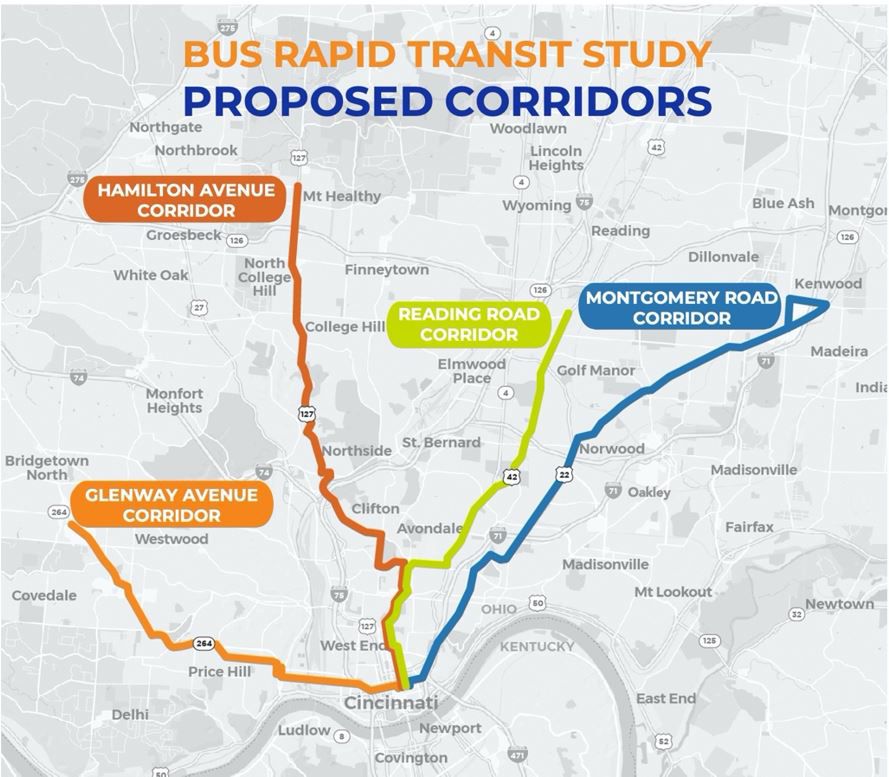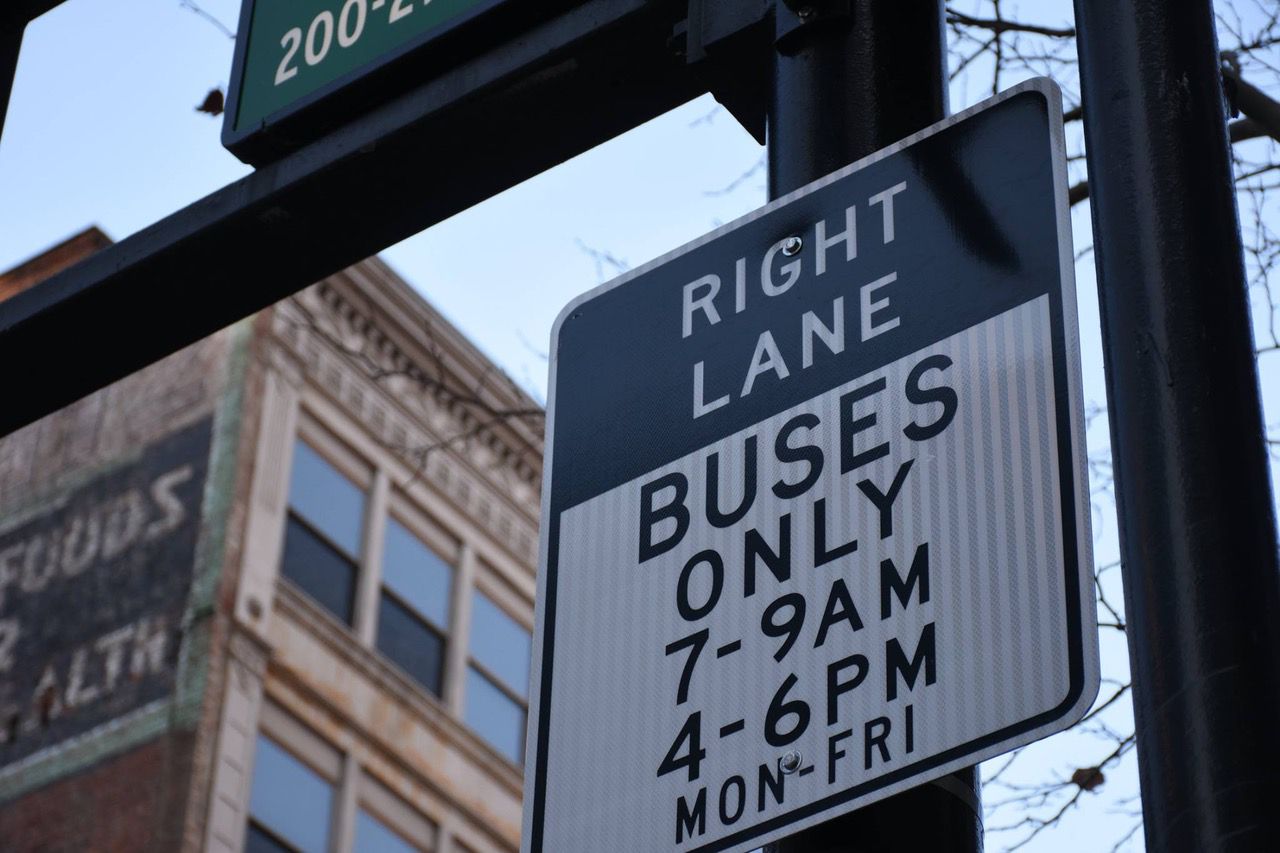CINCINNATI — Metro is looking to reduce travel times along some of Greater Cincinnati’s busiest travel corridors through the use of bus rapid transit routes. But to get the process started, the transit agency wants residents to weigh in on the routes to prioritize.
What You Need To Know
- Metro—Hamilton County's bus system—looks to launch bus rapid transit routes in some of the region's busiest corridors
- It combines the characteristics of rail transit with the flexibility of traditional bus service
- After receiving public feedback, Metro plans to start with two BRT routes as part of its Reinventing Metro service
- Actions require collaboration with the cities, municipalities affected by the service so it's unclear when moves would go into effect
BRT combines the fast and efficient characteristics of rail transit with the flexibility of traditional bus service.
Travel times improve through a combination of increased service, limited bus stops, smart traffic signals and dedicated bus lanes where possible. These routes also use pay-in-advance fare systems to reduce wait times when boarding.
While still early in the planning stages, Metro is evaluating four potential BRT corridors. Metro identified them by the primary roads they follow: Glenway Avenue, Hamilton Avenue, Reading Road and Montgomery Road.
Metro plans to start service in two corridors and then add the other two in the future. The goal, the agency said, is to build a regional BRT network.
“It’s fast and comfortable, cost-effective, and reliable and will be transformative for those who rely on transit to get to work, school and other activities and opportunities,” said Khaled Shammout, who leads strategic planning, development and innovation for Metro.

Shammout, who’s been with Metro for several years, said BRT systems can also support economic growth around stations and stops.
“It can also benefit the communities it serves—not only as a new transportation option but as a catalyst for revitalization and growth,” he added.
To kick off the evaluation process, Metro has launched a nine-month study to determine which two corridors will be the first.
The BRT study will analyze each proposed corridor in terms of its ability to attract riders, improve transit speed and reliability, enhance transportation network connectivity, provide fair access, support the construction of BRT infrastructure, and the potential to support economic development opportunities.
Metro—a nonprofit, tax-funded public bus service operated by the Southwest Ohio Regional Transit Authority—is rolling out the strategy as part of its ongoing Reinventing Metro plan to modernize bus service across Hamilton County and improve public transportation options for residents.
“Reinventing Metro isn’t just about improving bus service in our region; it’s also about lifting up the communities we serve,” said Darryl Haley, the transit agency's CEO and general manager. “By boosting the level of transit access along these travel corridors, we won’t just reduce travel times. We’ll also transform these communities and drive their growth for decades to come.”
A key part of Metro’s analysis of the BRT proposals will be feedback received from the community. There are several in-person public meetings scheduled over the next few weeks to introduce the options to the public and to gather input.
Cincinnati resident Clayton Adams feels BRT routes would be an excellent way to improve and promote ridership in Hamilton County.
“The faster the bus service, the better it is for riders,” said Adams, who lives on the west side of the city.
Today, Adams typically only takes the bus to sporting events. But the proposed BRT route on Glenway would “definitely improve access and efficiency” for him to get home in the future, he said.

“I would love to use public transit more if it were more efficient and faster,” Adams added. “The sooner that happens, the more everyone in our county will use it and see the benefits of it.”
Each of the four BRT alternatives would have unique road and traffic infrastructure needs, which are all under review by Metro as part of the study.
Currently, there is “very minimal BRT-specific infrastructure in place in those corridors being studied” in Cincinnati, according to Matt Hulme, the city’s transit coordinator.
Hulme noted that dedicated bus lanes are a critical component of BRT because they allow buses to travel in and around traffic more efficiently than would otherwise be possible with a shared lane.
Currently, the City of Cincinnati has one bus-only lane in place—for rush-hour traffic downtown on Main Street between Fifth Street and Central Parkway.
“The implementation of bus-only lanes would require a number of changes along any of the roads under consideration, such as curb line adjustments, traffic signal improvements, new signage and pavement markings,” he said.
There are about 800 traffic signals within Cincinnati city limits. Only about 25% of those signals have been converted to fiber optic or digital capability from analog technology.
Digital traffic signals aren’t required for BRT, Hulme said, but so-called “smart traffic signals” would make that type of bus line much more efficient to run and manage.
It’s not yet clear how long implementing any necessary changes for BRT would take or how much those things would cost.
Metro is working with officials from Cincinnati and all other municipalities involved to assess these needs and feasibility as part of the study, an agency spokesperson said.
John Brazina, the director of Cincinnati's Department of Transportation and Engineering, is a member of Metro’s stakeholder advisory group. The group meets regularly to discuss a variety of topics, including how BRT could be implemented.
BRT public input meeting schedule
Monday, Oct. 3, 4 to 7 p.m. — Community Action Agency (1740 Langdon Farm Rd.)
Tuesday, Oct. 11, 5:30 to 7:30 p.m. — Avondale Branch Library (3566 Reading Rd.)
Wednesday, Oct. 12, 5:30 to 7:30 p.m. — Evanston Recreation Center (3204 Woodburn Ave.)
Thursday, Oct. 13, 4 to 7 p.m. — Price Hill Branch Library (970 Purcell Ave.)
Monday, Oct. 17, 4:30 to 7:30 p.m. — College Hill Recreation Center (5545 Belmont Ave.)
Tuesday, Oct. 18, noon to 2 p.m. — Virtual meeting
Tuesday, Oct. 18, 5 to 7 p.m. — Virtual meeting
Wednesday, Oct. 19, 4:30 to 6:30 p.m. — Clifton United Methodist Church (3146 Clifton Ave.)





